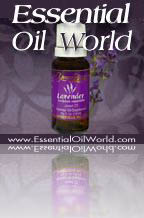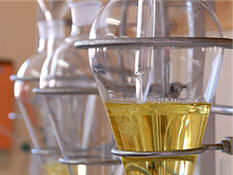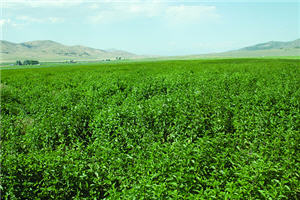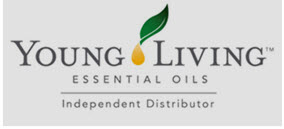
The Therapeutic Grade Essential Oil Difference
 Have you been wondering what "therapeutic-grade" means when it comes to essential oils? Just how much of a difference is there between a therapeutic-grade essential oil and an ordinary oil?
Have you been wondering what "therapeutic-grade" means when it comes to essential oils? Just how much of a difference is there between a therapeutic-grade essential oil and an ordinary oil?
The truth is, there is a huge difference between essential oils that simply smell good and those that are therapeutic-grade. Therapeutic-grade essential oils are judged by the highest standards of quality — and that includes the oil's hidden natural constituents, not just fragrance.
In Europe, a set of standards has been established that outlines the chemical profile and principal constituents that a quality essential oil should have. These guidelines are known as AFNOR and ISO standards. They help buyers differentiate between a therapeutic-grade essential oil and a lower grade oil with a similar chemical makeup and fragrance.
Why Most Essential Oils Do Not Meet AFNOR and ISO Standards

The vast majority of essential oils are produced for the perfume industry, which is only interested in the oil's aromatic qualities, not it's therapeutic qualities. In the perfume industry, certain practices are common and acceptable, such as using high pressure with high temperatures in high-volume "pressure cookers" and adding chemical solvents in the distillation process to produce greater quantities of oil at a faster rate.
While many people can't tell the difference in the scent of an essential oil produced this way, the truth is, these oils lack true therapeutic properties. Many of the important chemical constituents necessary to produce therapeutic results are either flashed off with the high heat or do not have enough time to be released from the plant material. Artificial fragrances boost what was lost in the harsh distillation process or didn't have time to develop.
What Determines Essential Oil Purity?
One of the factors that determines the purity of an oil is its natural chemical constituents. As in fine wine or gourmet coffee, these constituents can be affected by a vast number of variables, including:
- the part of the plant from which the oil was produced
- soil conditions
- fertilizer (organic or chemical
- geographical region
- climate
- altitude
- harvest season and methods
- distillation process

Take for example, common thyme (thymus vulgaris). Thyme produces several different chemotypes (biochemically unique variations within one species), depending on the conditions of its growth, climate, and altitude. One chemotype of thyme will yield an essential oil with high levels of thymol, depending on the time of year it is distilled. But the later it is distilled in the growing season (i.e., mid-summer or fall), the more thymol the oil will contain.
The Key To Producing Therapeutic-Grade Essential Oils
The key to producing a therapeutic-grade essential oil is to preserve as many of the delicate aromatic compounds within the essential oil as possible. These aromatic chemicals are fragile and easily destroyed by high temperatures and pressure, as well as contact with chemically-reactive metals, such as copper or aluminum.
The plant material should also be free of pesticides, herbicides and other agrichemicals, which can react with the essential oil during distillation to produce toxic compounds.
Can Essential Oils Be Synthesized?
Yes, chemists can actually recreate the main constituents and fragrances of some essential oils in the laboratory. This is how many lower priced essential oils are made. But these synthetic essential oils lack therapeutic benefits and may even carry risks.
Why Synthetic Essential Oils Carry Risks
The reason lower-priced, synthetic essential oils carry risks is because truly natural essential oils contain hundreds of different chemical compounds. Many of these compounds have never been identified and they lend important therapeutic properties to the oil. In addition, some essential oils contain molecules and isomers that are impossible to manufacture in the laboratory.
Synthesized oils lack these unidentified compounds. They also lack the molecules and isomers that are impossible to manufacture. In addition, artificial fragrances are typically added, creating inferior essential oils. Inferior quality and/or adulterated oils are unlikely to produce therapeutic results. Plus, they could very likely be toxic. The AFNOR and ISO standards were created to protect the public from mistaking potentially toxic essential oils for therapeutic-grade oils.
How Is The High Quality of Young Living Essential Oils Assured?
Independent laboratory testing proves that Young Living essential oils meet and often exceed industry requirements. In order to achieve therapeutic-grade classification, each essential oil must achieve the designation naturally, without manipulation and refinement, and meet specific criteria in four key areas:
- Plants
- Prepartion
- Purity
- Potency
Plants: Young Living essential oils and products are produced from the correct varieties of plants, grown in exceptional soil, and harvested at exactly the right time.
Preparation: Honoring a strict commitment to respect and protect the time-honored methods of distillation, Young Living makes every effort to preserve "nature's living energy" in a manner as close to its natural state as possible. Using pure mountain water free of additives, Young Living has developed a proprietary, stainless steel distillation process. Stainless steel is greatly preferred to steel, copper or aluminum, which can chemically alter the delicate constituents of essential oils.
Purity: In all Young Living essential oils, 100% purity is achieved through the use of quality plants and meticulous preparation, rather than through ultra-refinement. You can be assured that Young Living essential oils are unadulterated, uncut, and free of chemicals, pesticides and heavy metals.
Potency: To guarantee that Young Living essential oils and products exceed existing world standards and meet their own higher internal standards for potency, Young Living analyzes the finished oil's phytochemical profile to ensure it delivers optimal amounts of every key plant compound.





